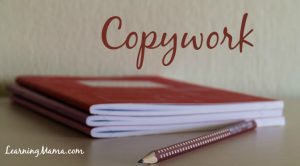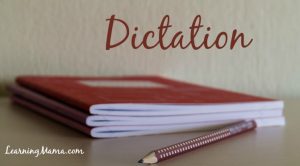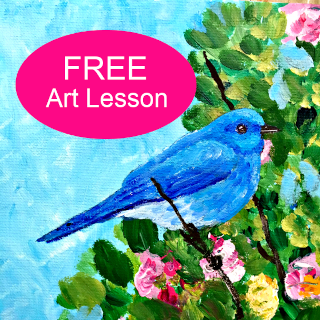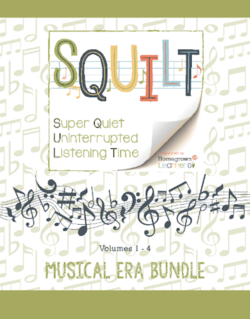In my last post I discussed the simplest and easiest tool for building strong writers in the early years — copywork — and today I’m moving on to perhaps the most difficult — narration.
If you’ve spent any time learning about classical or Charlotte Mason education, you’ve no doubt heard narration mentioned. In case you aren’t familiar with the concept though, narration is simply the retelling of what has been read, either to the child or independently by the child.
What does narration have to do with writing?
In the beginning, narration is completely a verbal exercise for the student. So why is it considered an important element in early writing instruction?
Narration plays an important role in learning to write well because it is oral composition. Just as children are able to listen and comprehend at a higher level than they are able to read, they are also able to verbalize at a higher level than they can write.
Writing is a complex process that involves several steps. The first step is simply an idea, but then the idea must be transformed into words, and then the words must be transcribed onto paper. Narration builds the mental skills required to do this with ease by removing the last step and focusing on the transfer of ideas into words. Mental composition is strengthened without the burden of additional writing skills impeding the student (spelling, handwriting, etc.) until writing skills catch up to thinking skills.
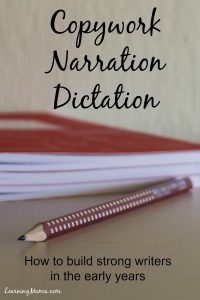
What are the benefits of narration?
- Builds attention span
- Helps with learning to order thoughts
- Teaches to process information, not merely to regurgitation it
- Helps to make connections with other content
- Allows you to evaluate the students learning
- Opens the door to discussions with your child
- Develops higher level thinking
- Increases comprehension and retention
Narration Tips & How to Get Started:
- Start Small. Begin by using only a short passage, around a paragraph in length. Ask your child to tell you what you just read in their own words. Gradually increase the length of your selections to match your child’s progress and abilities.
- Try using guided narration. Instead of only asking them to retell the content of the passage, prompt them to share about what they found the most interesting, most important, or their favourite part. Use these free, narration prompt bookmarks or my fun Narration Cootie Catcher to help!
- Use narration in other subjects (science, history) to simplify the curriculum and integrate writing across the curriculum.
- Allow your child to illustrate their narrations, act them out, or try these other creative narration ideas from Simply Charlotte Mason.
- Don’t interrupt or correct your child’s narration. Wait until they have finished before offering feedback.
- Provide assistance when moving into written narrations. Provide a word bank of key words to include, help with spelling, or help your student to create an outline prior to beginning.
- Don’t be alarmed when beginning written narrations if suddenly the length and quality of the narrations decrease. This is normal, and your child will gradually increase their skill and proficiency with written narrations just as they did with oral.
Narration is a great tool for developing strong writers in the early years, but it is in itself a skill that will build on itself and remain useful for your child throughout all the years of their education and beyond.
It can begin as simply as taking your child and a well-loved storybook onto your lap and letting them tell you the story!
Other posts in this early writing series:

